Curing Condenser Confusion: An Audio History of the AKG C 414
For this story, originally published in September of 2011 on our sister blog Trust Me I’m a Scientist, we gathered 40 years worth AKG 414s in one studio for a decisive side-by-side comparison.
Now, in honor of the 45th anniversary of this classic microphone, we’re bringing it to you again. How do the new versions fare against the vintage models? Listen to the clips below to decide for yourself. Could it be the ultimate AKG C 414 shootout?
The AKG C 414 is one of the most important and misunderstood microphones of all time.
The way we count it, this model has had 12 or more incarnations over the past 45 years, each with it’s own idiosyncrasies, and some varying significantly in sound and design.
As AKG tweaked this model, it picked up new bits of circuitry, lost others, and even underwent changes to the capsule, a dramatic alteration that amounts to putting a new set of ears on the microphone. Over the years this versions of this model have been celebrated, derided, and described as both unquestionably bright and inarguably dark. So which is it?
In an effort to clear up some of the confusion, we set out to test all of the major incarnations of this mic side-by-side on the instruments they excel on. Read on and listen for yourself as we attempt to demystify this classic line once and for all.
The History
In the 1930s, Americans and British manufacturers tweaked their dynamic and ribbon microphone designs, while the Germans took steps to perfect the condenser element. Using factories in the cities of Berlin and Gefell, the Neumann company built the microphones that would power German broadcasting during World War II, and later bring unprecedented fidelity to recording studios in the United States.
Demand for this style of microphone grew tremendously in the post-war years, with Telefunken distributing these advanced sound-capture devices throughout the west. But as Neumann’s Geffell factory fell behind the iron curtain, it wasn’t long before the time came for a new designer to get in the game.
In 1953, an Austrian company called AKG revealed the now-legendary CK12 microphone capsule, and became one of the two dominant forces in the manufacture of commercial condenser microphones. This new capsule became be the basis of their bestselling AKG C-12 microphone (which was rebranded by their distributor Telefunken, with some minor changes, as the ELAM 251) and eventually, the AKG C-414.
The Sound
While there’s something subtly dapper, masculine, and muscular about the sound of the Neumann mics built around the breakthrough M7 capsule, the sound of AKG’s CK12 capsule occupied the other end of the spectrum. Theirs were mics characterized by their clean, clear midrange and breathtaking high-frequency reproduction.
Neumann’s U47 provided an upper midrange bump that delivered plenty of clarity in its own way, but this model also rolled off slightly in the upper reaches of its frequency response. By comparison, the high-end of the new AKG mics went on for days. They had lower self-noise, and were a leaner, cleaner animal. In many ways the CK12 was the Stratocaster Neumann’s Les Paul, Pepsi to their Coke.
As the transistor revolution swept through the world of electronics, both these companies retooled and miniaturized. As Neumann’s U47 and U67 gave way to the FET 47, U77, and most famously, the U87, AKG got busy designing the solid-state C 412. Soon after its release, they upgraded the mic to allow 4 pickup patterns, and in 1971, the C 414 “comb” was born.
After 5 years, AKG redesigned the body, switched to a more durable “cannon” connector and reworked the mic’s transformer to provide clean, unsaturated low-end reproduction at high levels of volume. These changes yielded the first fully-modern 414, The C 414 EB (1976). And this EB version is where our story really begins.
Dark or Bright?
Its name aside, the original EB model wasn’t characterized by its bass response, but, like the C12, by its take on the high-frequencies.
This mic was outfitted with the same brass-ringed CK12 capsule as the C12. It made for a sound with a neat, tidy midrange, complemented by extended top end which can sound be shimmering, airy, or just subtly bright depending on the age and condition of the capsule.
The 414 EB was a popular mic, competing nicely with Neumann’s new U77 and U87 models. But halfway through the production of this mic, AKG inexplicably changed the way the capsule was made, without changing the name of the microphone.
To many engineers, the change in sound seemed dramatic, and from here on out, the story of the 414 would become mired in confusion.
The “Dark” Ages
With the introduction of the EB’s new “teflon capsule” gone the airy high-frequency boost of the original CK12 capsule disappeared. The new capsules were tremendously less time consuming to produce, but the new mics coming out of the factory were measurably darker, although not unpleasantly so. This new style of darker-sounding capsule was eventually renamed the 2072 Z and it persisted as the only choice of capsule in the 414 until 1993.
As years went on, AKG made incremental tweaks to keep up with new technologies. With the advent of digital recording became clear that microphones would need lower self-noise to compete on the market. To this end, the 414 EB-P48 revision (1980) adjusted the way power was handled in the mic.
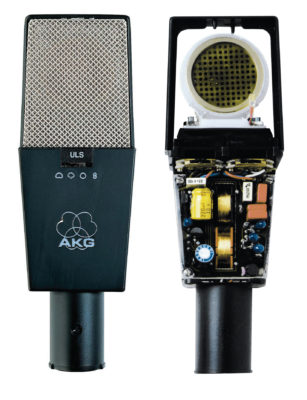 1986 saw the release of the C 414 B-ULS model. This “Ultra Linear Series”, would be AKG’s bestselling condenser for years to come. Extra gain-stages in this mic lowered the noise floor further, but also contributed the sound of the mic becoming further darker and more veiled.
1986 saw the release of the C 414 B-ULS model. This “Ultra Linear Series”, would be AKG’s bestselling condenser for years to come. Extra gain-stages in this mic lowered the noise floor further, but also contributed the sound of the mic becoming further darker and more veiled.
The sound of the B-ULS is anything but “bright”. It’s warm, woody, even slightly murky as far as condensers go. As an overhead drum mic, the 414 B-ULS’ transformer can add a pleasant sense of meat and sluggishness to fast-acting transients in the cymbals, or add subtle weight and saturation to toms.
A “Bright” Future
As huge of a success as the B-ULS was, AKG found itself flooded with inquiries from lovers of the original 414. Where was the spritely, fleet-footed response and gentle airiness of the original CK12 capsule? The 414 was clearly a changed mic and, although it was popular, it wasn’t one that everybody loved.
In response, AKG designed a new, brighter capsule and added it to the short-lived TL “transformerless” version.
This created a new animal altogether: the C 414 TL-II (1993). You’ll know it by its gold grill.
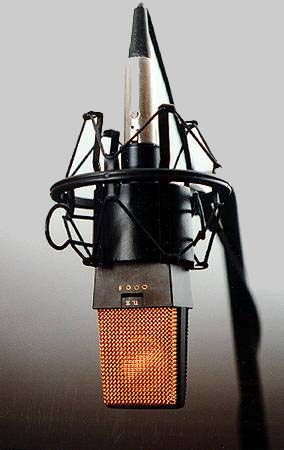 Marketed as a mic best for lead vocals, drum overheads and acoustic soloists, the TL-II was meant to be everything the B-ULS wasn’t: clean, clear, fast, articulate.
Marketed as a mic best for lead vocals, drum overheads and acoustic soloists, the TL-II was meant to be everything the B-ULS wasn’t: clean, clear, fast, articulate.
It succeeded enough that deriders would come call this mic “too bright” just as others had called the B-ULS “too dark”! To a new generation of 414 fans, the TL-II was an over-hyped version of their classic 414 B-ULS.
In reality, both these assessments are excessive, and I believe the sound clips below demonstrate that. Although they are certainly voiced differently, these two mics are cut from the same cloth.
When we listen to all of these mics back-to-back in a single setting, the difference between models is palpable in certain cases, but far from being near the same level of importance as mic placement, instrument, and performance.
414: TNG
If you don’t speak dork well enough to recognize the Star Trek reference above, I’m obliged to remind you that you’re currently reading an online microphone shootout, an exercise that ranks just a few points lower on the get-a-date-scale than learning conversational Klingon.
This will be useful to keep in mind before some of us are tempted to preemptively form strong opinions about the newest versions, the 414 XLS and the 414 XL-II.
Simply put, the XLS is AKG’s newest version of the darker B-ULS model and the XL-II is the current version of the TL-II.
Both these mics have higher output (by 6db) and lower self-noise (by 8db) than their previous incarnations. They also have LED-indicators above their polar-pattern switches, which is a little disconcerting in a “what-is-Jean-Luc-Picard-doing-in-my-kitchen?” kind of way. Unlike past models, these switches no longer cause an audible speaker-threatening pop whenever they’re used, which is a welcome change. The XLS version has done away with the transformer that was part of the sound of its earlier counterpart, the B-ULS.
(Editor’s Note: There was also short-lived B-XLS and B-XL-II as well as an apocryphally named “60th” anniversary edition just before these. The newest versions have dropped the letter B from the name, changed the way the capsule is mounted, and added in-between options for the polar patterns.)
To some ears, these new mics will have a bit less body and complexity than some of the original versions. Whether that’s good or bad depends on your tastes. Although these versions make me miss some of the smoky complexity that can make a later EB model sound so great, these mics have an almost pre-eq’d balance of frequencies that sounds instantly modern. Whether that’s good or bad is a matter of personal taste. On the plus side, they could potentially help certain sounds find room in a dense contemporary mix without too much tweaking.
The Test
The audio samples below wouldn’t have been possible without the help of three amazing NYC institutions.
To get all of these microphones together in one place, we relied on the help of two pro audio rental companies. Geo and Chris at the NYC mainstay Dreamhire, provided us with a pair of Teflon capsule 414 EBs, a P48 and a newer XLS model. To track down a pair of original brass capsule 414 EBs on such short notice we reached out to a new force in the rental business, vintagemicrophones.com (a branch of Joel Morowitz‘s Ecstatic Electric)
Looking at the rate cards at both agencies, I’m reminded of just how powerful and cost-effective gear rentals can be. Used wisely. rental companies like these can provide album-altering upgrades at shockingly low rates. (But that’s the focus of another article.)
Once we had the mics rounded up, we needed to find a great live room, killer engineer, and some equally competent players. We called Myles Turney at Vanity Sound in Williamsburg Brooklyn who brought in co-owner Joel Arnow to play drums, and that afternoon’s client Jason Myles Goss to play some guitar.
The nerdy guy you’ll hear doing his best S.O. Coutant impression is a 29-year-old version of yours truly. Fortunately, I think I sound a little less awkward in front of a microphone these days.
Drum Overheads
414s are a classic option for drum overheads. We put 8 of these mics up in a spaced-pair array roughly centered on Joel’s kick drum, managing to position the capsules of the four pairs of microphones so close together that they were practically touching.
For this test, we recorded takes on the 4 models that comprise the most classic and ubiquitous versions of the 414: the EB with brass capsule, EB with teflon capsule, B-ULS, and TL-II. The samples below are presented in that in that order. We recorded one take with all models in cardiod mode and another with all models in omni.
Although each pair has its own character (listen for it in the cymbals and toms especially) the difference between polar patterns is at times more dramatic than the difference between mics. Some of the versions sound pretty close. As expected, the differences between the darkest and brightest versions are telling, although far from night-and-day.
Drum Overheads Cardiod (CK12 | Teflon | B-ULS | TL-II)
Drum Overheads Omni (CK12 | Teflon | B-ULS | TL-II)
Acoustic Guitar
Next, we recorded a take of acoustic guitar, courtesy of Jason. This time there are 6 samples. Once again you’ll hear the mics in chronological order: The EB CK12, EB Teflon, B-ULS, TL-II, XLS, and XL-II.
Hearing all 6 mics in a row, it’s easy to lose perspective.
The difference between the CK12 and the B-ULS or the difference between the Teflon and the XL-II are quite pronounced when they’re heard back-to-back, but our brains can have trouble retaining the nuances of each model with so many mics too choose from. Here’s where a pen and paper can be handy.
For a practical in-session shootout, I’d never recommend comparing more than 3 options at a time. Sometimes differences in a real-world shootout are crucial. Sometimes they’re unessential. With fewer choices it’s often easier to make that call.
If you’d like to play these clips in whatever order you choose, you can download them as WAVs here.
Acoustic Guitar Cardiod (CK12 | Teflon | B-ULS | TL-II | XLS | XL-II)
Acoustic Guitar Omni (CK12 | Teflon | B-ULS | TL-II | XLS | XL-II)
Finally, we get to hear these mics on spoken voice. Maybe it’s because I’m familiar with my own voice, but I found the differences in sound to be particularly pronounced in these male voice sample.
The order once again is chronological:
EB CK12, EB Teflon, B-ULS, TL-II, XLS, and finally, XL-II
Male Voice (Model Names Spoken In File)
Female Voice
For female voice, Myles Turney and I grabbed some random strangers off the street and traded them beer for their unparalleled ability to form sentences. For our female voice samples, the lovely Chel spoke into each of these mics in turn. (I believe she took a Lagunitas IPA).
She’s untrained and fairly soft-spoken, and perhaps because of the lower level, the difference between versions is less apparent. What is noticeable however, is the noise floor of each mic. At this low level, we can hear the mics become progressively more silent as the samples progress. To compare the EB with the X series is especially telling.
Female Voice (CK12 | Teflon | B-ULS | TL-II | XLS | XL-II)
We also recorded some piano with the incredible Alastair Ottesen, but due to difficulties in positioning 4 pairs of microphones on a single upright piano while maintaining a halfway decent phase relationship, I decided to leave these clips off. As a longtime engineer I’ve grown allergic to unpleasant phase problems and don’t want to subject you to them.
So there you have it. We hope you enjoyed this brief history and demonstration. All clips presented were recorded through and API preamp into a Lynx Aurora A/D converter. The files above are high quality compressed audio, and are also available as WAVs. What are your assessments, opinions and ruthless judgments? Feel free to let us know in the comments below.
Please note: When you buy products through links on this page, we may earn an affiliate commission.









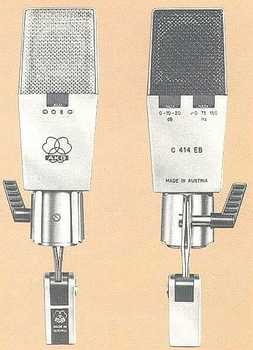
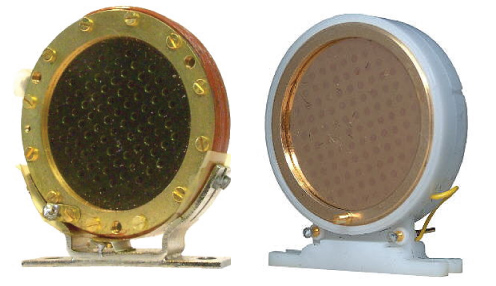
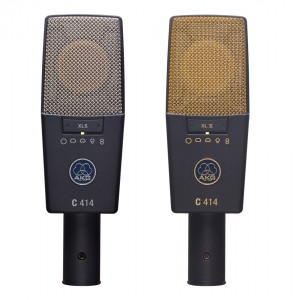
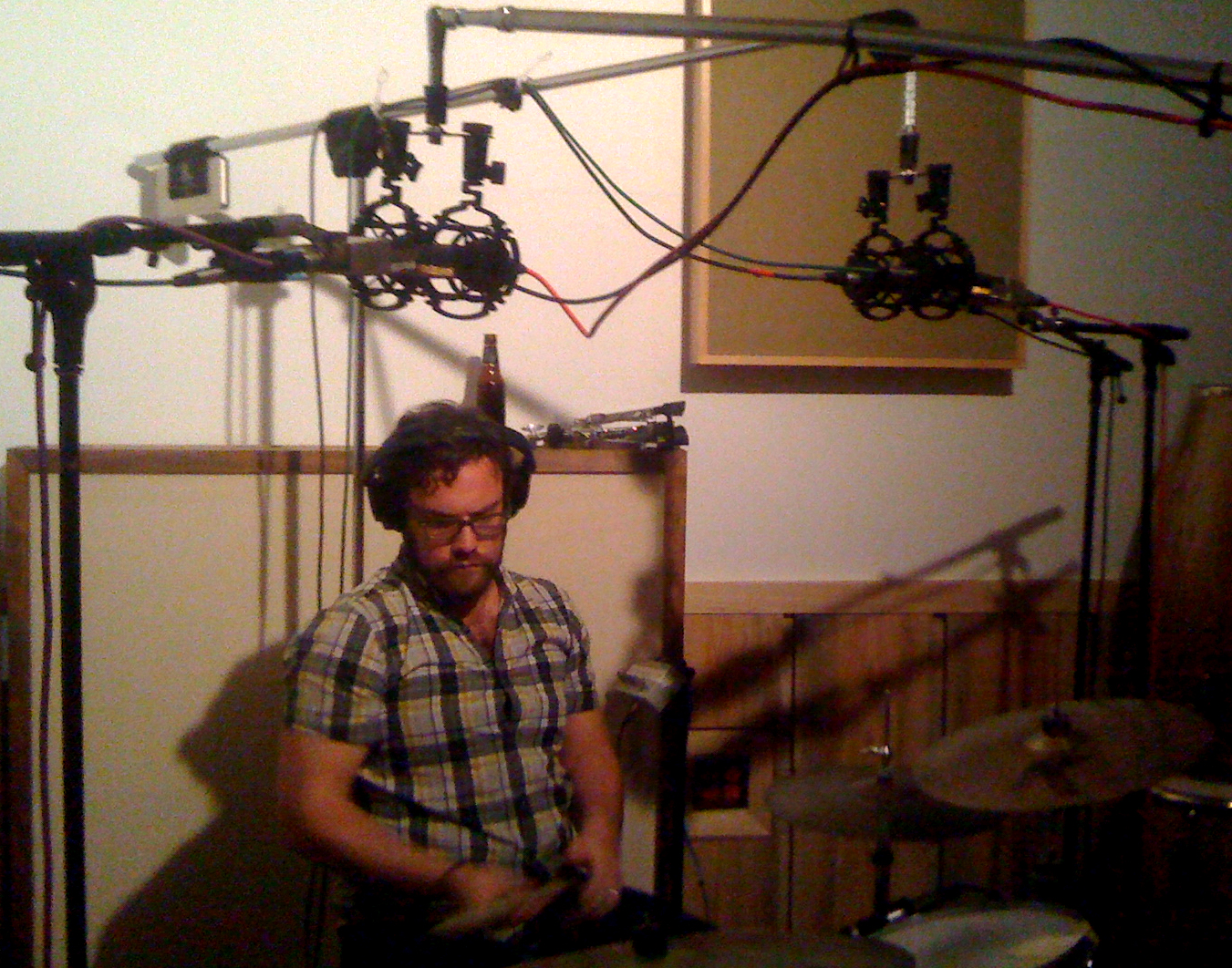


Shane McGill
October 27, 2016 at 9:18 pm (8 years ago)I get lots of “500 Server Errors’ on this page – is it just me? No audio files.
Justin C.
November 1, 2016 at 2:36 pm (8 years ago)Hi Shane, all seems to work here on my end. If you run into any other issues, just let us know!